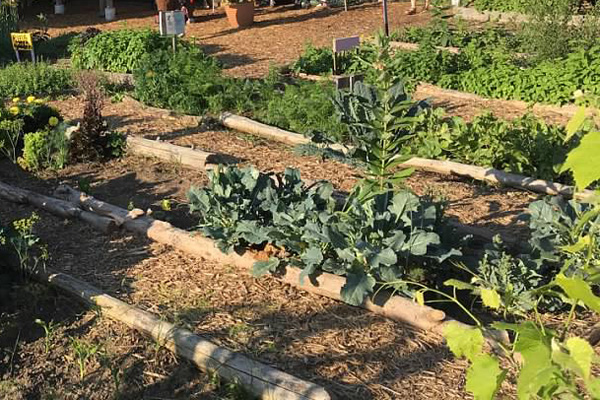Get This Report about City Blooming
Get This Report about City Blooming
Blog Article
Not known Factual Statements About City Blooming
Table of ContentsCity Blooming Things To Know Before You BuyThe Facts About City Blooming RevealedSome Known Incorrect Statements About City Blooming The Definitive Guide to City BloomingSome Known Details About City Blooming
Intrigued in growing food available in the City of Chicago? Considering beginning a community yard? Adjustments to the Chicago Zoning Regulation allow farming uses like community yards and metropolitan farms in lots of parts of the city. Below is a checklist of often asked questions regarding the policies and regulations that farmers ought to take into consideration when preparing an urban farming project.
The zoning modification does not customize any kind of other codes taking care of composting, structure licenses, acquiring or leasing City possessed property, company licenses or environmental contamination. There are existing codes that manage these issues and they stay in complete result and may be appropriate to your project. Neighborhood yards are usually owned or managed by public entities, civic organizations or community-based organizations and preserved by volunteers.
Urban ranches expand food that is planned to be marketed, either on a not-for-profit or for-profit basis. Due to their business objective, city ranches call for a business certificate.
Not known Facts About City Blooming
Composting is enabled yet only for plant material that is produced and made use of on website. The quantity of garden compost material can not surpass 25 cubic backyards at any offered time according to the requirements in 7-28-715 of the City's Municipal Code. Yes. Because the soil at most new garden sites requires amending, garden compost, soil, wood chips, or various other materials can be gotten to create or enhance the expanding area - City gardening.

If a structure authorization is needed after that the hoophouse will be taken into consideration an accessory building. You can figure out even more about the structure license demands by getting in touch with the Division of Structures. The 25,000-square-foot size limit is meant to protect against a solitary area garden from controling a provided block or taking away from the block's existing household or industrial character.
The limitation does not relate to gardens situated in Public Open Area (POS) districts. Can there be greater than one neighborhood garden that is 25,000 square feet on a solitary block? Yes. The dimension limitation uses to private gardens, not to individual blocks. No. Fence is not called for, nonetheless, gardens that have huge vehicle parking locations may be required to install fence or various other landscaping features.
A Biased View of City Blooming
B1 & B2 districts require that all commercial use activities be performed inside your home. Is fence required for city ranches? Fences may be called for, along with landscaping and testing, for certain vehicle parking locations and outside work or storage space areas depending on location and the specific task taking place.
Urban farms call for structure authorizations and zoning approvals prior to construction (fruit and vegtables). Various other forms of city review may be required depending on certain structures, tasks, dimension, landscaping, licensing, public heath and stormwater monitoring problems.
The Department of Business Matters and Consumer Protection can help establish the details kind of company license that's required. Off road parking is required for the majority of industrial jobs in Chicago. The required number of car parking rooms is based on the number of staff members working on site and not the square video of the Resources expanding area.
The 6-Minute Rule for City Blooming

Yes. A metropolitan ranch can offer compost product produced on website, however, the operation should abide by the laws in 7-28-715 of the Chicago Municipal Code. Yes. Aquaponic systems are enabled indoors on urban ranches in lots of zoning districts. Nevertheless, a zoning review and building permit is required in order to set up frameworks or systems and a business license is needed as defined over.
Up to five hives or swarms of honey bees might be kept as an accessory use. Beekeepers should register with the Illinois Department of Agriculture. For more information about the proposed zoning amendment you might speak to the Division of Housing and Economic Development, Bureau of Preparation and Zoning at 312.744.8563.
Farming in cities and metropolitan areas A city ranch in Chicago. Urban agriculture describes different practices of growing. https://clean-gondola-5c7.notion.site/City-Gardening-Transforming-Urban-Spaces-7213d2fdc6c341e8bd8975e4c2f79126?pvs=4, processing, and distributing food in metropolitan areas. The term also puts on the area tasks of animal husbandry, tank farming, beekeeping, and gardening in an urban context. Urban farming is identified from peri-urban agriculture, which happens in backwoods at the edge of residential areas.
The Main Principles Of City Blooming
, who look for to develop social networks established on a common values of nature and neighborhood holism. These networks can establish by method of formal institutional support, becoming incorporated into regional town preparation as a "change town" motion for sustainable metropolitan growth.
Some of the first proof of metropolitan farming comes from Mesopotamia.
Report this page